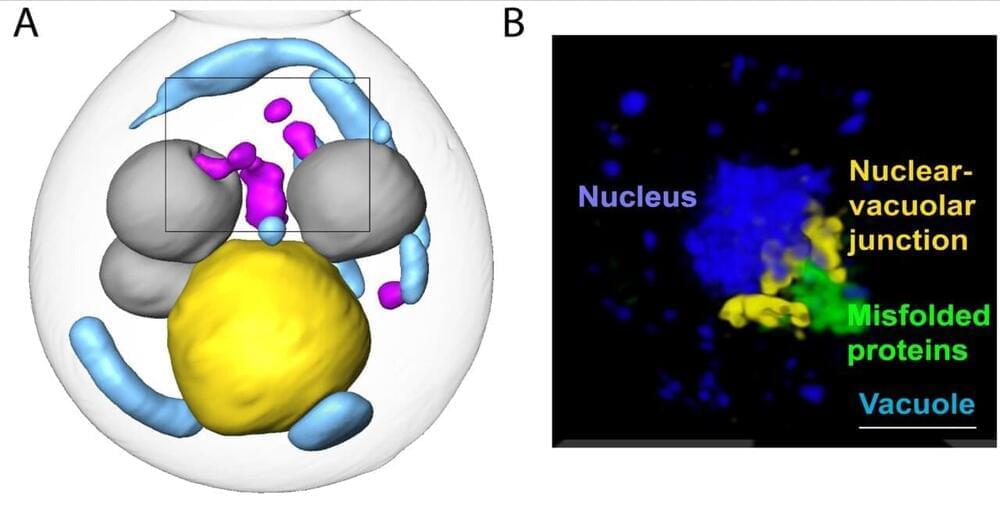In this talk, De Kai examines how AI amplifies fear into an existential threat to society and humanity, and what we need to be doing about it. De Kai’s work across AI, language, music, creativity, and ethics centers on enabling cultures to interrelate. For pioneering contributions to machine learning of AIs like Google/Yahoo/Microsoft Translate, he was honored by the Association for Computational Linguistics as one of only seventeen Founding Fellows worldwide and by Debrett’s HK 100 as one of the 100 most influential figures of Hong Kong. De Kai is a founding Professor of Computer Science and Engineering at HKUST and Distinguished Research Scholar at Berkeley’s ICSI (International Computer Science Institute). His public campaign applying AI to show the impact of universal masking against Covid received highly influential mass media coverage, and he serves on the board of AI ethics think tank The Future Society. De Kai is also creator of one of Hong Kong’s best known world music collectives, ReOrientate, and was one of eight inaugural members named by Google to its AI ethics council. This talk was given at a TEDx event using the TED conference format but independently organized by a local community.
Get the latest international news and world events from around the world.
Networks of Silver Nanowires Appear to Learn And Remember Like The Human Brain
Over the past year or so, generative AI models such as ChatGPT and DALL-E have made it possible to produce vast quantities of apparently human-like, high-quality creative content from a simple series of prompts.
Though highly capable – far outperforming humans in big-data pattern recognition tasks in particular – current AI systems are not intelligent in the same way we are. AI systems aren’t structured like our brains and don’t learn the same way.
AI systems also use vast amounts of energy and resources for training (compared to our three-or-so meals a day). Their ability to adapt and function in dynamic, hard-to-predict and noisy environments is poor in comparison to ours, and they lack human-like memory capabilities.

Study Says Staying Positive About Aging May Help Reverse Cognitive Decline
The researchers found those who showed positive age beliefs were 30% more likely to recover from cognitive impairment than those who held negative age beliefs, irrespective of the severity of the cognitive decline. The time for recovery was also quicker in people with positive age beliefs.
They also found that the participants who stayed positive about aging were less likely to develop mild cognitive impairment over 12 years.
It is widely believed that memory loss associated with aging is irreversible. However, a new study says people who embrace aging positively may recover from cognitive decline.
Cognitive decline in older adults includes difficulty in thinking, memory, concentration, and other brain functions. The cognitive impairment may strike all of a sudden or gradually progress with age.

Machine learning framework classifies pneumonia on chest X-rays
Pneumonia is a potentially fatal lung infection that progresses rapidly. Patients with pneumonia symptoms – such as a dry, hacking cough, breathing difficulties and high fever – generally receive a stethoscope examination of the lungs, followed by a chest X-ray to confirm diagnosis. Distinguishing between bacterial and viral pneumonia, however, remains a challenge, as both have similar clinical presentation.
Mathematical modelling and artificial intelligence could help improve the accuracy of disease diagnosis from radiographic images. Deep learning has become increasingly popular for medical image classification, and several studies have explored the use of convolutional neural network (CNN) models to automatically identify pneumonia from chest X-ray images. It’s critical, however, to create efficient models that can analyse large numbers of medical images without false negatives.
Now, K M Abubeker and S Baskar at the Karpagam Academy of Higher Education in India have created a novel machine learning framework for pneumonia classification of chest X-ray images on a graphics processing unit (GPU). They describe their strategy in Machine Learning: Science and Technology.

Study finds new pathway for clearing misfolded proteins
Misfolded proteins are toxic to cells. They disrupt normal functions and cause some age-related human degenerative diseases, like Alzheimer’s, Parkinson’s, and Huntington’s diseases. Cells work constantly to eliminate misfolded proteins, but these clearance mechanisms are still poorly understood.
In a new study published April 20 in Nature Cell Biology, researchers at Stanford University discovered a previously unknown cellular pathway for clearing misfolded proteins from the nucleus, the compartment where the cell stores, transcribes, and replicates its DNA. Keeping junk away from those processes is critical to normal cellular function. The new pathway could be a target for age-related disease therapies.
To find the new pathway, researchers in the lab of Judith Frydman, the Donald Kennedy Chair in the School of Humanities and Sciences, integrated several genetic, imaging, and biochemical approaches to understand how yeast cells dealt with misfolded proteins. For the experiments, the team restricted misfolded proteins to either the nucleus or the cytoplasm—the area inside the cell but outside the nucleus. The team visually followed the fate of the misfolded proteins through live-cell imaging and super-resolution microscopy.


AI will Not Become Conscious — Rupert Sheldrake
This clip is from the Before Skool Podcast ep. # 4 with Rupert Sheldrake. Full podcast can be accessed here: https://www.youtube.com/watch?v=68fjlUuvOGM&t=3784s.
Rupert Sheldrake, PhD, is a biologist and author best known for his hypothesis of morphic resonance. At Cambridge University he worked in developmental biology as a Fellow of Clare College. He was Principal Plant Physiologist at the International Crops Research Institute for the Semi-Arid Tropics in Hyderabad, India. From 2005 to 2010 he was Director of the Perrott-Warrick project for research on unexplained human and animal abilities, administered by Trinity College, Cambridge. Sheldrake has published a number of books — A New Science of Life (1981), The Presence of the Past (1988), The Rebirth of Nature (1991), Seven Experiments That Could Change the World (1994), Dogs That Know When Their Owners are Coming Home (1999), The Sense of Being Stared At (2003), The Science Delusion (Science Set Free) (2012), Science and Spiritual Practices (2017), Ways of Going Beyond and Why They Work (2019).
Rupert gave a talk entitled The Science Delusion at TEDx Whitechapel, Jan 12, 2013. The theme for the night was Visions for Transition: Challenging existing paradigms and redefining values (for a more beautiful world). In response to protests from two materialists in the US, the talk was taken out of circulation by TED, relegated to a corner of their website and stamped with a warning label.
To Learn more about Rupert Sheldrake and his research, please visit https://www.sheldrake.org/
Please subscribe to Before Skool. Thank you.

The A.I. Dilemma — Tristan Harris & Aza Raskin — Center for Humane Technology — March 9, 2023
This video is from a presentation at a private gathering in San Francisco on March 9th with leading technologists and decision-makers with the ability to influence the future of large-language model AIs. This presentation was given before the launch of GPT-4.
Center for Humane Technology.
Original video : https://vimeo.com/809258916/92b420d98a

ChatGPT may hinder the cybersecurity industry
Join top executives in San Francisco on July 11–12, to hear how leaders are integrating and optimizing AI investments for success. Learn More
Since its launch in November 2022, ChatGPT, an artificial intelligence (AI) chatbot, has been causing quite a stir because of the software’s surprisingly human and accurate responses.
The auto-generative system reached a record-breaking 100 million monthly active users only two months after launching. However, while its popularity continues to grow, the current discussion within the cybersecurity industry is whether this type of technology will aid in making the internet safer or play right into the hands of those trying to cause chaos.